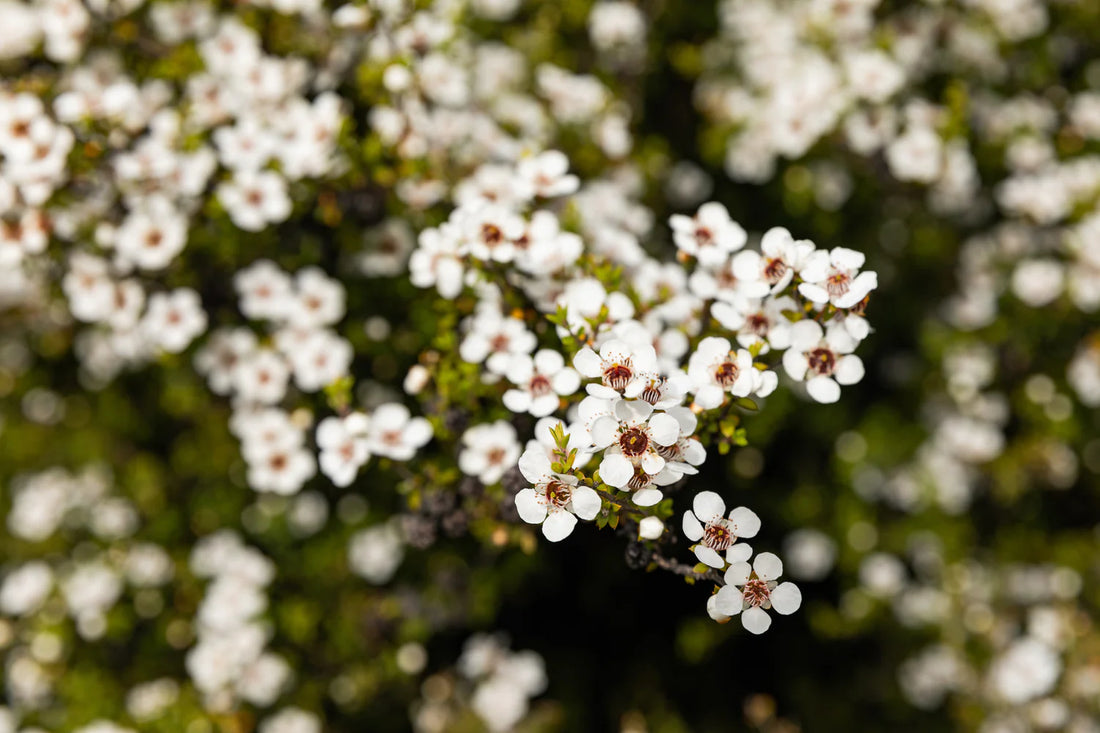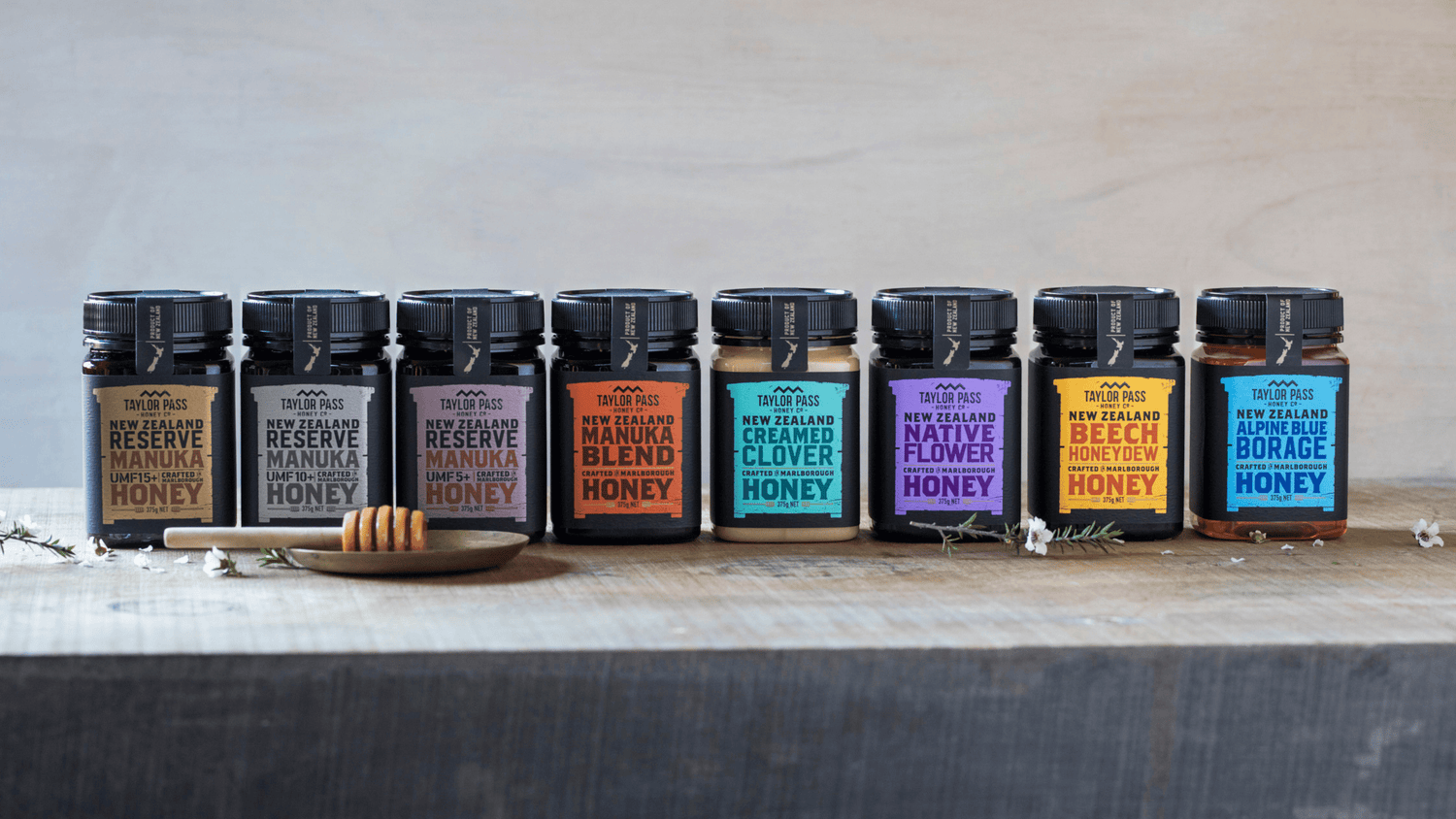Multifloral, Monofloral, and Manuka Honey: Understanding The Difference
As honey enthusiasts explore the diverse world of this sweet treat, they often encounter terms like multifloral, monofloral and Mānuka honey. While all honey is either monofloral or multifloral, its various flavors and health benefits can be attributed to the floral sources from which it is derived. In this blog, we’ll delve into the fascinating realms of monofloral and multifloral honey, with a special focus on Mānuka honey, exploring their unique characteristics, benefits, and the differences that set them apart.

Multifloral Honey
Multifloral honey, as the name suggests, is derived from the nectar of various flowers. This results in a more complex flavour profile and a diverse range of nutritional elements, such as antioxidants, flavonoids, probiotic enzymes, pollen, and vitamin B and C. The composition of multifloral honey can vary based on the geographic location and the mix of flowers available to the bees. This diverse range of floral influences gives multifloral honey its distinctive taste and colour, making it a delicious and versatile choice for culinary uses.
Key Characteristics:
- Rich Diversity: Multifloral honey captures the essence of a region's diverse flora, creating a nuanced taste that reflects the local environment.
- Varied Nutritional Content: The combination of different nectars contributes to a broader spectrum of vitamins, minerals, and antioxidants.

Monofloral Honey
Monofloral honey is the product of bees that predominantly forage on a single plant species during a specific flowering period. This exclusive relationship between bees and a particular flower results in honey with distinct flavours, aromas, and therapeutic properties. Monofloral honey is not only valued for its delicious taste but also for potential health benefits associated with the unique properties of the specific flowers involved in its production. Common examples include clover honey, orange blossom honey, and eucalyptus honey.
Key Characteristics:
- Distinct Flavour Profiles: Monofloral honey showcases the distinct taste and aroma of the predominant flower. For example, clover honey is often light and mild, while eucalyptus honey can have a bold, medicinal flavour.
- Unique Therapeutic Properties: Different flowers impart specific health benefits to the honey, making some monofloral varieties sought after for their potential antibacterial, antioxidant, and anti-inflammatory properties.

Mānuka Honey
Mānuka honey, derived primarily from the nectar of the Mānuka tree (Leptospermum scoparium) native to New Zealand, is renowned for its exceptional antimicrobial properties. This honey can be either monofloral or multifloral, and stands out for its unique qualities, UMF rating, and associations with wound healing and immune support.
Key Characteristics:
- Unique Antibacterial Properties: Mānuka honey is prized for its potent antibacterial and antimicrobial activity, attributed to the presence of methylglyoxal (MGO). This gives it therapeutic potential for fighting off infections, treating wounds and boosting the immune system.
- UMF (Unique Mānuka Factor) Rating: The UMF rating measures the unique compounds in Mānuka honey, indicating its quality and potency. A higher UMF rating is associated with greater antibacterial effectiveness.
Monofloral vs Multifloral Mānuka Honey
Diving deeper into the realm of Mānuka honey, it's essential to distinguish between monofloral and multifloral variations within this extraordinary honey category. Monofloral Mānuka honey is sourced predominantly from the nectar of the Mānuka tree, offering a more concentrated and specific flavour profile with pronounced medicinal properties. The bees selectively forage on Mānuka blossoms during the flowering season, resulting in honey with a high level of methylglyoxal (MGO), a compound linked to its unique antibacterial potency.
On the other hand, multifloral Mānuka honey is a blend that incorporates nectar from the Mānuka tree as well as other floral sources. Multifloral Mānuka honey will usually have a lower MGO than monofloral types of honey and are ideal for daily use. While they still contain beneficial antibacterial properties, vitamins, and minerals, the amounts are much smaller than those found in monofloral types of Mānuka honey. The choice between monofloral and multifloral Mānuka honey ultimately depends on personal preferences, desired flavour nuances, and specific health-related goals.
In the world of honey, the distinctions between monofloral and multifloral varieties add to the rich tapestry of flavours and health benefits. Mānuka honey, with its exceptional properties, serves as a prime example of the extraordinary qualities that can emerge when bees and specific plants form a symbiotic relationship. Whether you savour the delicate notes of a single blossom or enjoy the complexity of a floral blend, each jar of Taylor Pass Honey tells a story of nature's bounty and the incredible work of our buzzing friends, the bees. Taste a world of good and find high quality, New Zealand honey at www.taylorpasshoney.co.nz!


